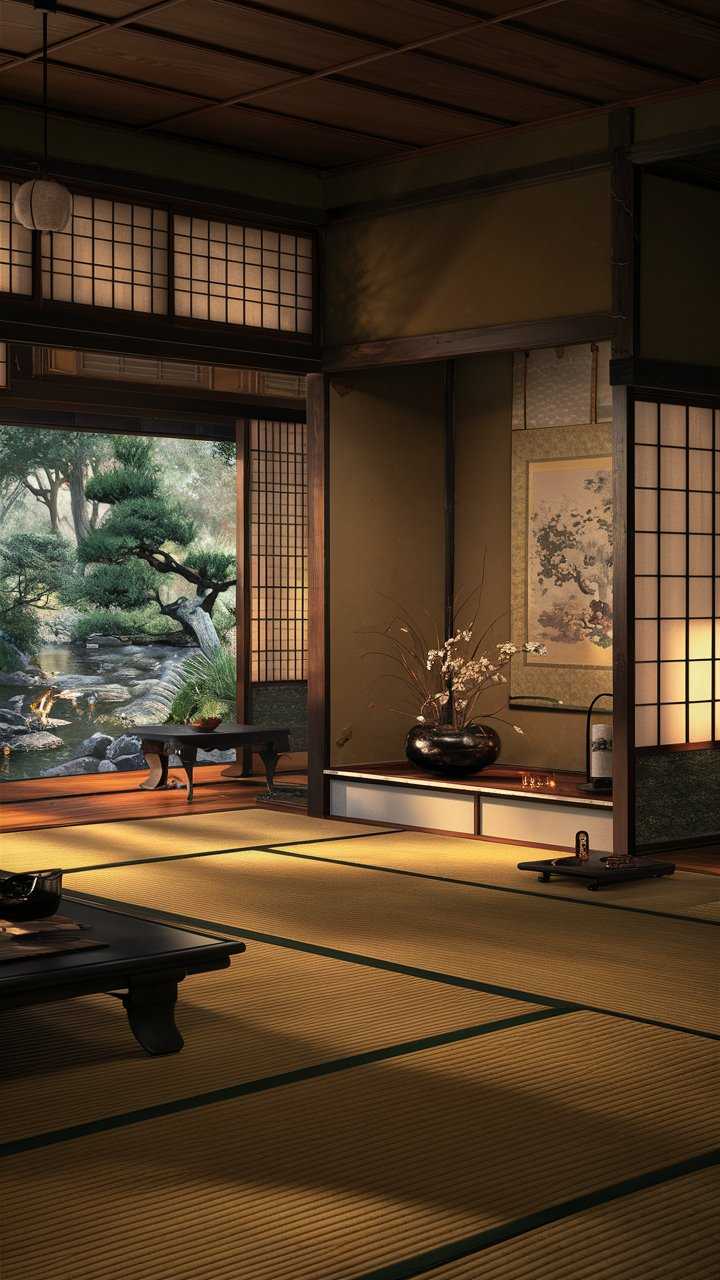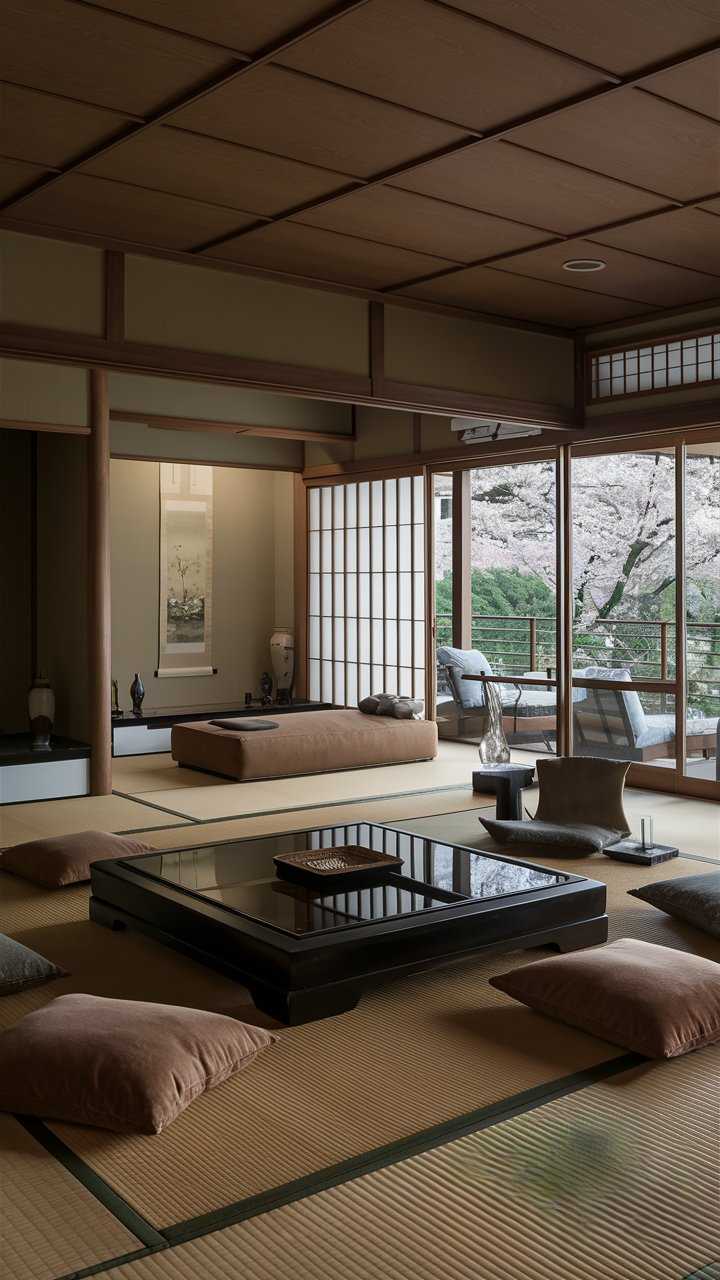Zen-Inspired Japanese Living Room Ideas for Your Home
Adding zen living room ideas to your home makes it a peaceful spot for mindfulness and relaxation. This style comes from Japanese interior design. It focuses on simplicity, natural beauty, and elegance that works well.
Use minimalist living room elements like neutral colors and clean decor. Add natural materials to make your space a serene haven. These ideas bring the calm of Japanese culture into your home, offering a quiet escape from daily life.
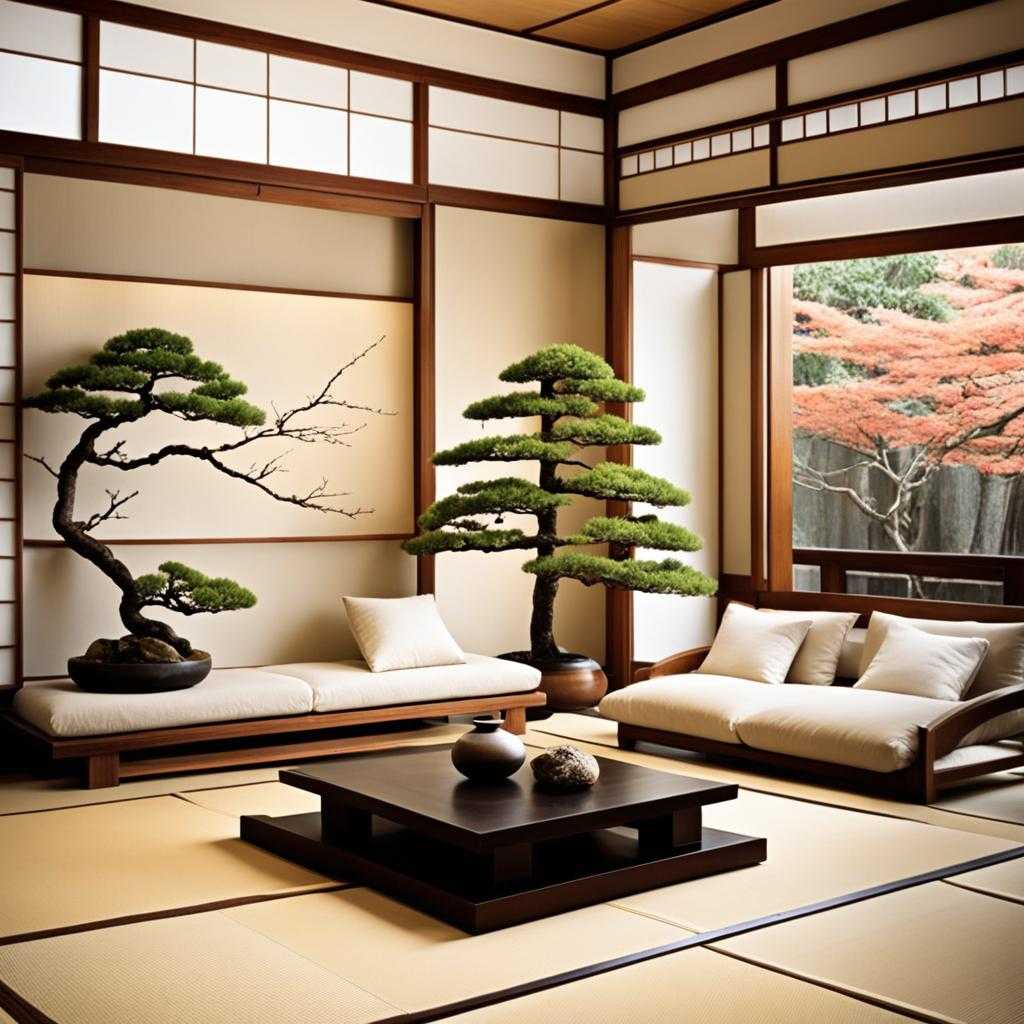
Key Takeaways
- Emphasize simplicity and natural beauty in your decor.
- Utilize a neutral color palette for a calming effect.
- Incorporate natural materials for harmony with nature.
- Explore minimalist furniture arrangements to create open spaces.
- Consider using shoji screens for privacy and aesthetic appeal.
- Infuse wabi-sabi aesthetics by embracing imperfection in design.
The Essence of Japanese Interior Design
Japanese interior design combines beauty with practicality, rooted in deep cultural values. It focuses on minimalism, making spaces clear and open. A zen living room brings peace and mindfulness into the home.
Key elements like wabi-sabi value imperfection’s beauty. This idea teaches us to see beauty in simplicity and natural materials. Using wood, stone, and textiles connects us to nature, making a minimalist room more inviting.
The aim of this design is to bring calm and balance. Arranging furniture thoughtfully adds to the peaceful feel. Each piece has a purpose, making the space both beautiful and functional. This approach creates a welcoming space that supports well-being and timeless beauty.
Key Concepts of Zen Living Room Design
A zen living room is all about simplicity and harmony. It uses a neutral color palette to create a calm space. Colors like white, gray, and earth tones make it peaceful and relaxing.
Using natural materials is key to the look. Bamboo, wood, and linen add beauty and connect us to nature. These materials help make the space calming.
Flexible layouts are important in zen living room design. They let you arrange furniture for different activities. This keeps the space usable and peaceful. You can choose layouts that are open and free, reducing clutter and improving movement.
Minimalist Living Room: Emphasizing Simplicity
A minimalist living room focuses on simplicity and functionality, inspired by Japanese design. It has clean lines and is free from clutter. This creates a calm and peaceful space perfect for relaxing.
In a zen living room, every piece of furniture has a purpose. It showcases minimalist style with carefully chosen items. This allows a smooth transition from inside to outside. Natural light is key, making the room feel more peaceful and in harmony.
Minimalism means decluttering and simplifying your space, which brings calm. Key elements often include:
- Functional furniture for comfort and easy movement.
- Neutral colors that help keep the mind calm.
- Natural materials like wood and stone that connect us to nature.
Choosing a minimalist living room brings a fresh look to modern design, inspired by Japanese style. These spaces encourage a calm lifestyle, making room for Zen moments in everyday life.
Natural Materials: Creating Harmony with Nature
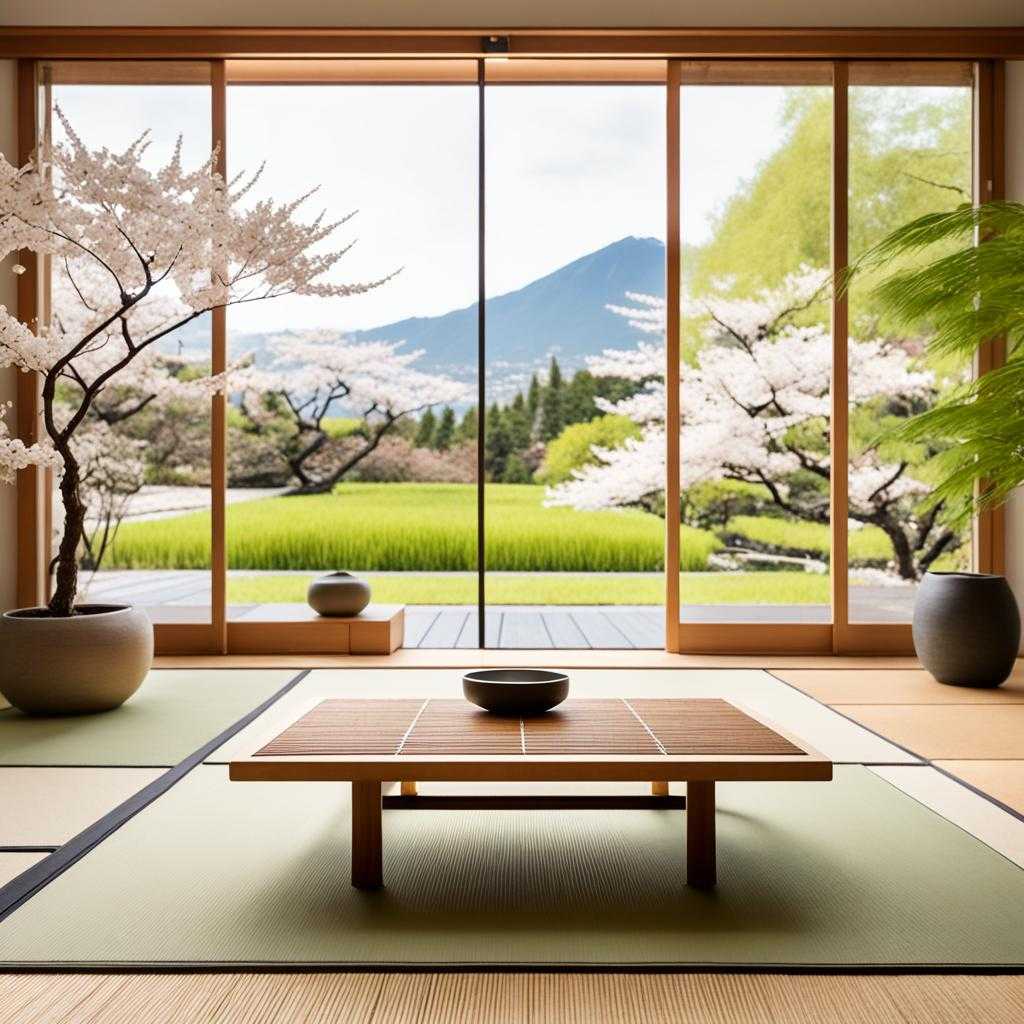
Using natural materials in your space brings a sense of harmony to Japanese interior design. Elements like wood, bamboo, stone, and paper make your space look better and feel warmer. They create a calm atmosphere, which is key to tranquility in japanese living room ideas.
Choosing sustainable materials is good for the planet. When picking items for your living room, think about:
- Wood: Go for light-colored woods like pine or cedar for warmth and texture.
- Bamboo: This versatile material works well for flooring, furniture, or decor.
- Stone: Adding stone elements gives your space a natural, grounded look.
- Paper: Rice paper is great for shoji screens or light fixtures, adding a delicate touch.
Adding these natural materials to your living room makes it look organic and connects you to nature. The result is a peaceful space that encourages relaxation and mindfulness in your daily life.
Incorporating Shoji Screens for Space and Privacy
Shoji screens are key in japanese interior design. They mix function with beauty. Made from light wood frames with rice paper, they let in soft light and keep things private. Adding shoji screens to a zen living room helps define spaces without making them feel boxed in.
These elements can really make a room look better. Here are some reasons to use shoji screens:
- Natural Light: Shoji screens keep a room feeling light and airy, making it peaceful.
- Space Division: They’re a great way to separate areas in a room, keeping things open yet distinct.
- Artistic Decor: Their simple design adds beauty to a room, fitting well with zen living room style.
Using shoji screens is a smart way to mix privacy with openness. They’re a key part of japanese interior design. They help create a calm space ideal for relaxing and being mindful.
Japanese Living Room Ideas: Highlighting Functional Layouts
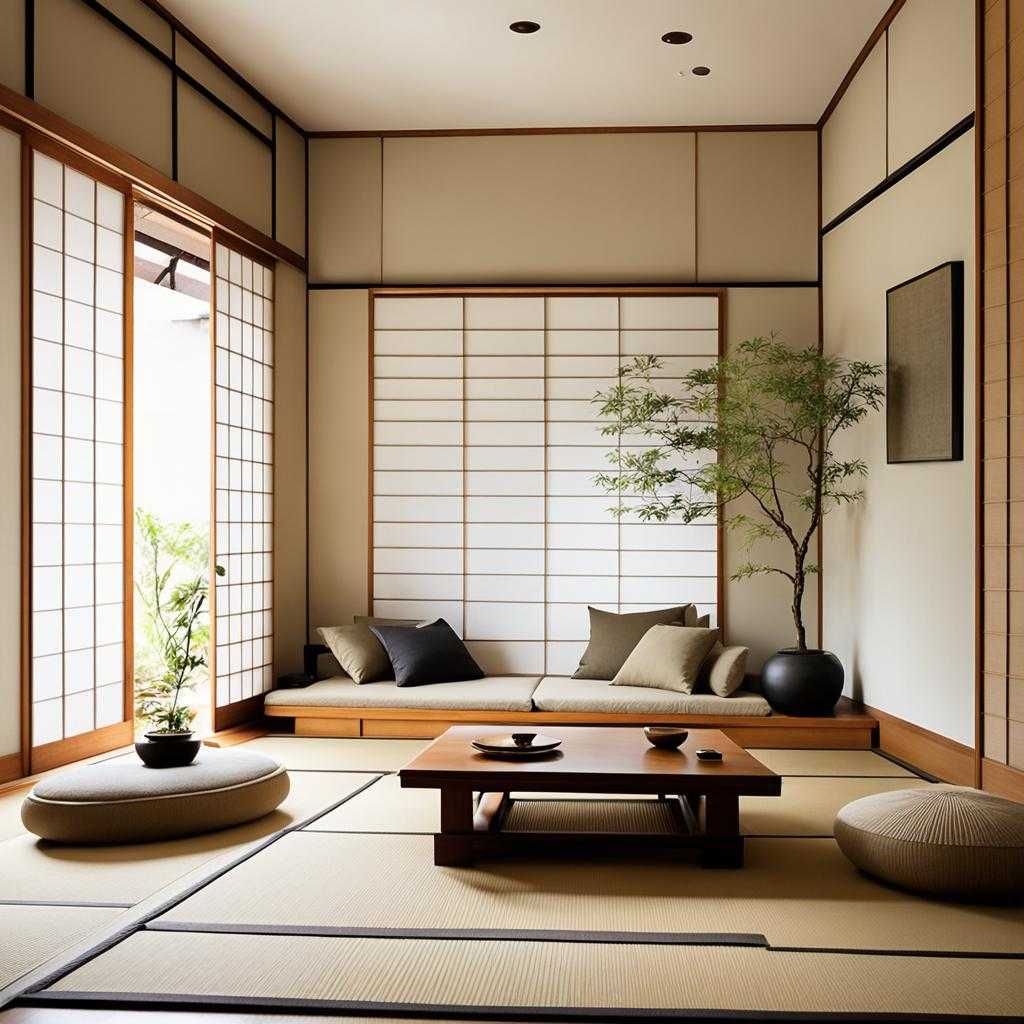
Creating a serene zen living room focuses on functional layouts. These designs use open spaces to make a peaceful place for relaxation. Think about these two key points to achieve this calm vibe:
Open Spaces for Tranquility
Open spaces make a zen living room feel tranquil. They allow easy movement between areas, bringing in fresh air. This setup boosts the room’s look and lets in natural light, making it calm and welcoming.
Flexible Furniture Arrangement
A flexible furniture setup is key for different situations. It lets homeowners change the room for guests or family time. This way, the living room stays useful while keeping the zen feel.
Decorating with Wabi-Sabi Aesthetic
The wabi-sabi aesthetic loves the beauty of imperfection. It fits well with traditional Japanese living room ideas. This way of thinking makes each room unique and full of character. By using this style, a home turns into a peaceful place that tells your story and shows timeless beauty.
Embracing Imperfection
Adding the wabi-sabi look to your living room means loving the flaws. Things like uneven shapes, rough textures, and natural colors make your space welcoming. Choosing furniture that shows signs of age adds to your room’s charm. This style mixes minimalism with character, just like Japanese living room ideas.
Handcrafted Artifacts
Handmade items are key in the wabi-sabi look. They add realness and history to your space. Things like different pottery, hand-knitted fabrics, and old finds tell stories. Each piece brings a unique touch and shows the effort put into making it. These items make your Japanese-style living room warm and special.
| Element | Description | Wabi-Sabi Example |
|---|---|---|
| Asymmetry | Uneven arrangements promote balance through contrast. | Uneven shelving with varied sizes of decor |
| Natural Materials | Use of wood, stone, and clay enhances organic feel. | Handcrafted wooden coffee table with visible knots |
| Textural Variety | Incorporating different textures enriches visual interest. | Rough handmade ceramics paired with soft linen |
| Earthy Colors | Warm hues create a calming atmosphere. | Natural tones of beige, brown, and soft green |
Utilizing Tatami Mats for Authenticity
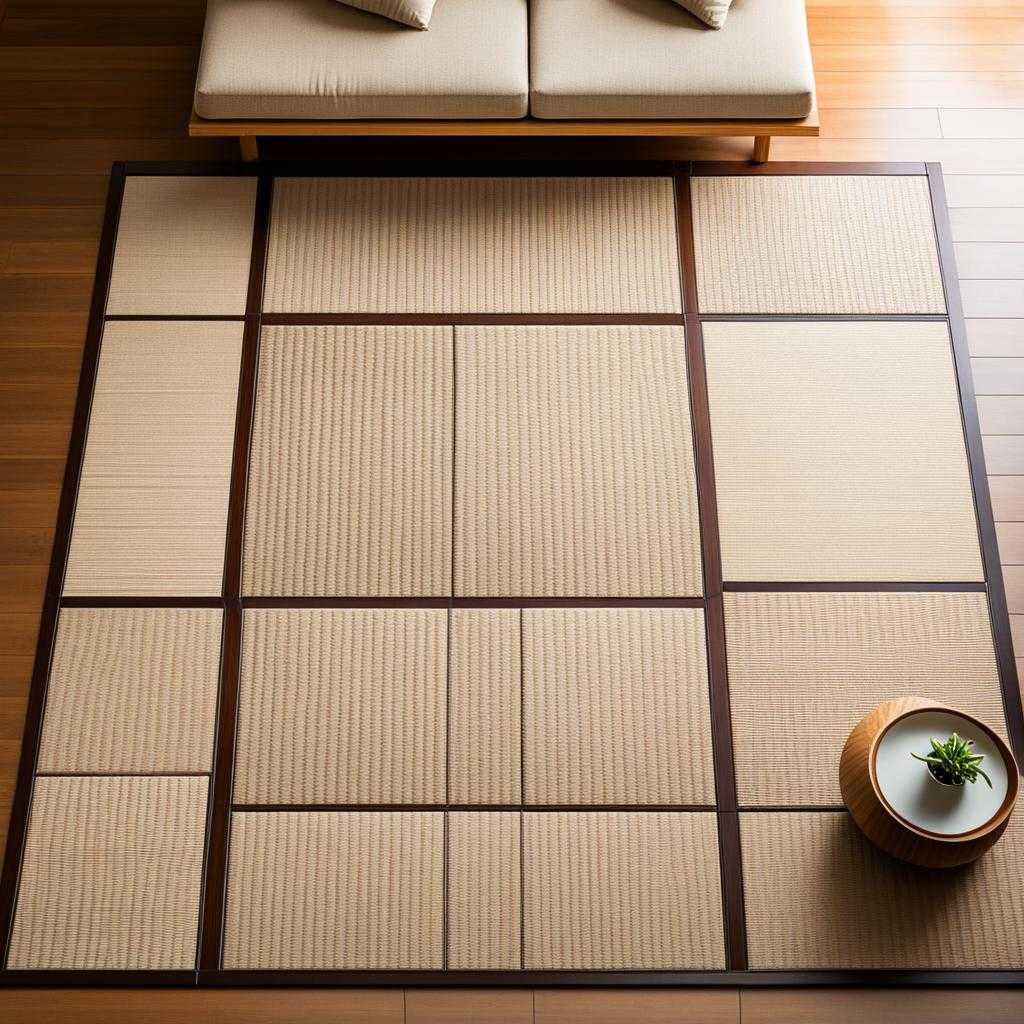
Tatami mats are key in japanese interior design. They bring an authentic feel to any space. Made from rice straw and rush grass, these mats look good and are useful. They make a room warm and welcoming, perfect for a minimalist living room.
Adding tatami mats to your living area makes it cozy and relaxing. Their soft feel and natural colors are great for low furniture. This setup is simple yet functional, fitting well with minimalist style.
Using tatami mats also follows the Zen idea of simplicity. It makes the living space more sensory. By picking these traditional items, you connect more with nature and keep the minimalist living room look.
Bringing Nature Indoors: Bonsai Trees and Ikebana Arrangements
Adding nature to your living space makes it peaceful. Bonsai trees bring beauty and calm. They show patience and skill. These small trees add beauty and calm to the room.
Ikebana arrangements are another way to bring nature inside. This art form focuses on balance and simplicity. It makes the room more beautiful and reflects nature’s beauty.
Together, bonsai trees and ikebana arrangements create a calm space. They make the room look beautiful and connect us to nature. This makes any living area a peaceful place.
Neutral Color Palette for a Calm Ambiance
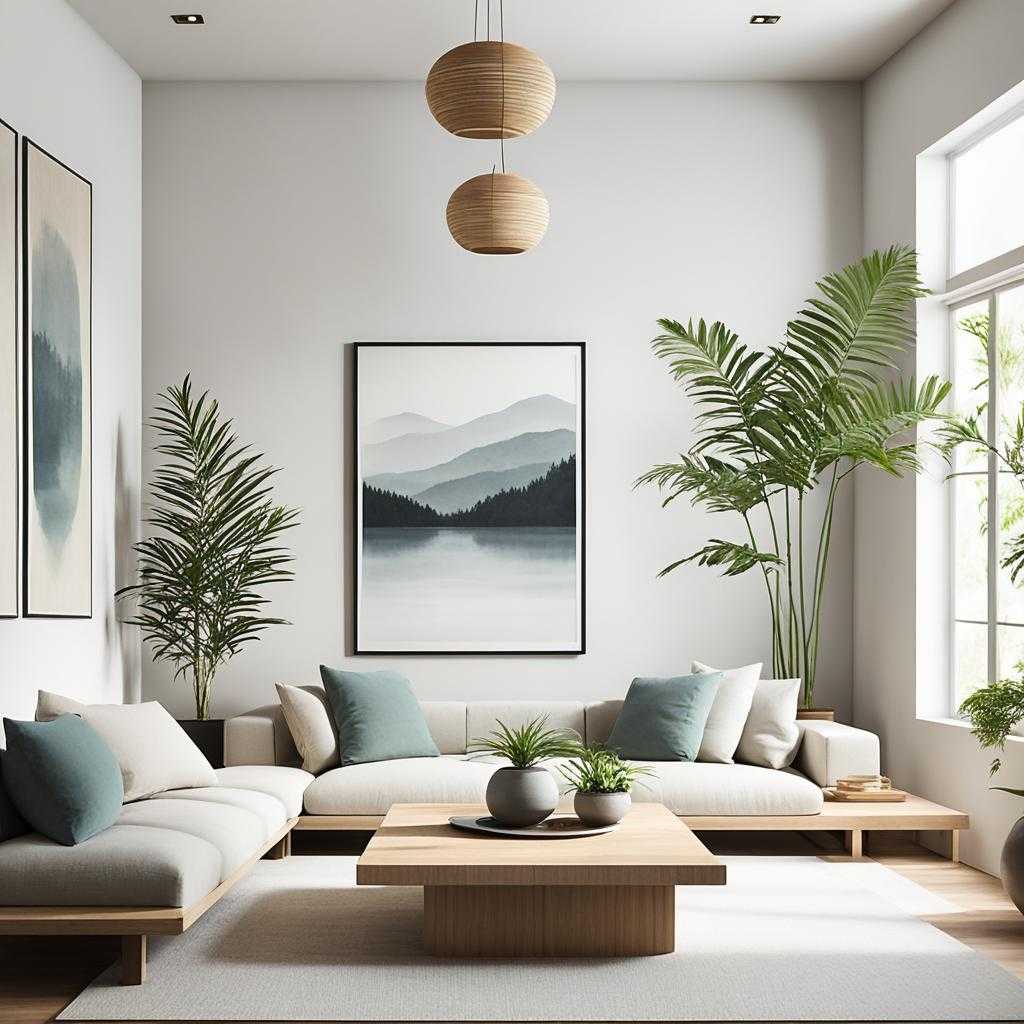
A neutral color palette is key to a peaceful living room. Colors like white, beige, and gray are calming and pleasing to the eye. They blend well with natural materials, bringing a sense of calm.
Using these colors helps reduce clutter, making the mind calm. A simple color scheme fits well with many Japanese living room styles, making the space welcoming. It creates a balanced and peaceful atmosphere, perfect for relaxing.
Here’s a table showing how a neutral color palette benefits a minimalist living room:
| Aspect | Benefits |
|---|---|
| Visual Calmness | Creates a peaceful and tranquil environment |
| Space Perception | Makes the room appear larger and airier |
| Natural Harmony | Enhances the aesthetic of natural materials |
| Versatility | Complements a variety of decor styles |
| Timelessness | Offers a classic and enduring appeal |
Creating Soft Lighting for a Cozy Atmosphere
Soft lighting is key to making a zen living room feel like a peaceful oasis. It invites you to relax and creates a cozy space that follows the style of japanese interior design. Using table lamps, floor lanterns, or string lights adds warmth and makes the room feel welcoming.
Choosing soft lighting instead of harsh overhead lights makes the room more tranquil. This lets you highlight your decor and create a peaceful vibe. You can adjust the light levels with dimmers for different times and moods.
Soft colors and warm tones in the lighting match the zen living room’s look. Adding things like watercolor floral pattern wallpapers brings in nature’s touch. These patterns work well with soft lighting, making the room feel calm and true to japanese interior design.
| Lighting Type | Benefits | Placement Tips |
|---|---|---|
| Table Lamps | Creates focused areas of light, enhances warmth. | Place on side tables or consoles near seating areas. |
| Floor Lanterns | Contributes ambient light, adds height to decor. | Position in corners or beside furniture to create visual interest. |
| String Lights | Offers a whimsical ambiance, promotes a cozy atmosphere. | Hang along walls or ceilings to create a soft glow. |
Conclusion
Japanese living room ideas help create spaces that are peaceful and calm. Using zen living room principles makes these spaces welcoming and perfect for relaxation. By choosing natural materials and simple designs, you can make your living area a true retreat.
Features like shoji screens and tatami mats add authenticity and connect you to Japanese culture. Decor and soft lighting make the space even more calming. This creates a peaceful spot in the midst of daily chaos.
A well-designed japanese living room is a place of peace and mindfulness. It combines beauty with practicality, making a space where comfort and calm meet. This approach shows how important it is to live mindfully.




